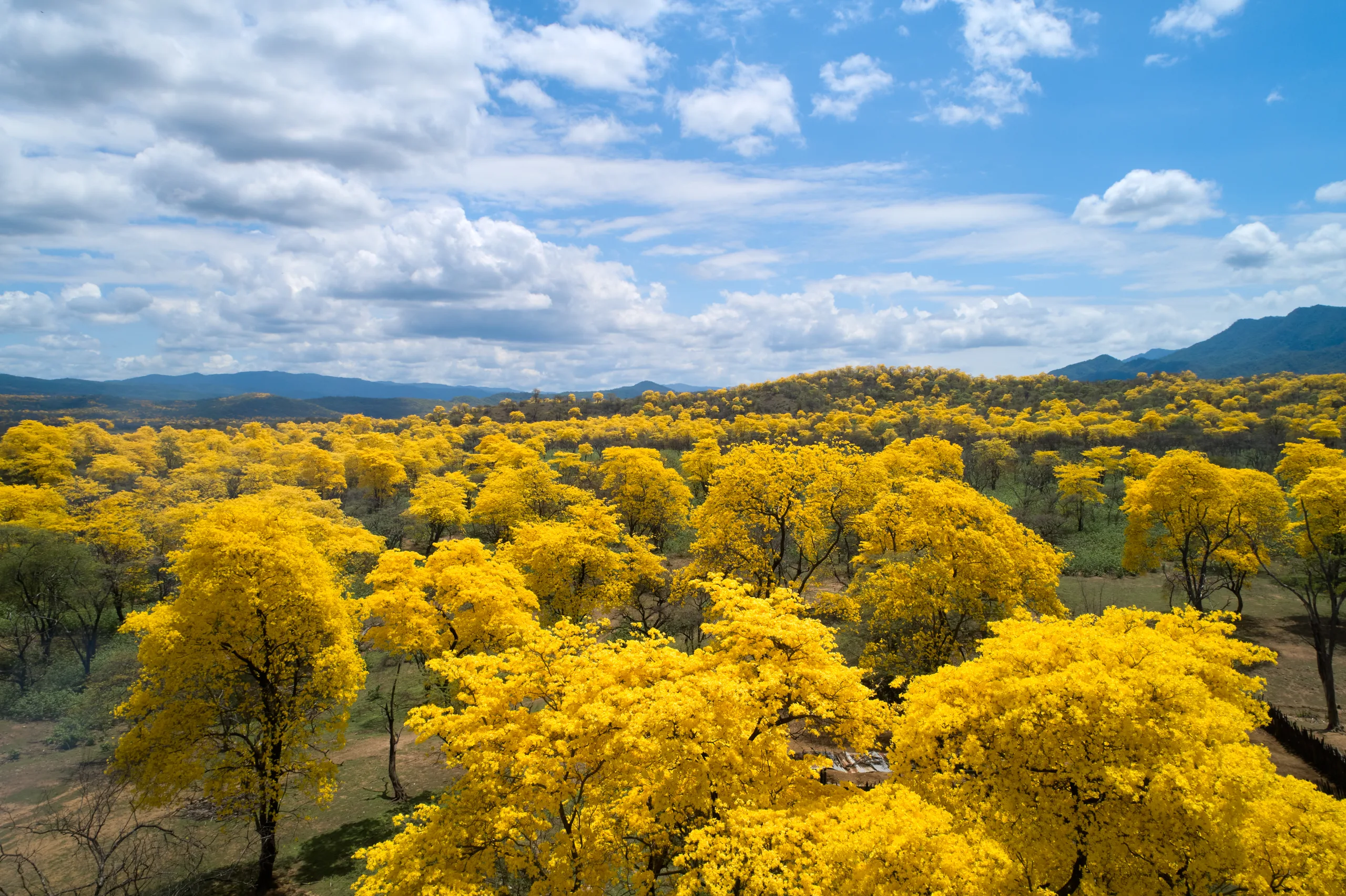The Annual Guayacanes Bloom Impacted by Irregular Weather Patterns
01/11/2024
In the dry forest of southern Ecuador, the annual blossoming of the Guayacanes is a spectacular event that follows the first rains of the year. This unique ecosystem endures an extended dry season, lasting from four to nine months, in contrast to the rainy seasons. Typically, as the rainy season begins, usually in January, the forest transforms into a vibrant display of captivating colors and fragrances, leaving an unforgettable impression on those fortunate enough to witness it. The bloom this year reached its peak last week on January 6th and 7th. However, irregular weather patterns have impacted the full splendor of the flowering.

Conserving the Dry Forest Together: The “Los Guayacanes” Communal Partnership
In June 2021, authorities and local populations of three rural parishes—Bolaspamba, Cazaderos, and Mangahurco—united to establish the “Los Guayacanes” Communal Partnership with the aim of conserving, preserving, and protecting the environment and biodiversity of the dry forest. In these communities, the dry forest is collectively cherished as a home deserving protection and appreciation. Since the partnership’s establishment, significant progress has been achieved in the management and administration of the region’s natural spaces.
Presently, the Guayacanes Communal Partnership is implementing a sustainable territory management model, receiving technical support from organizations such as Nature and Culture and FUNACE, with funding provided by BOS+ and Andes Amazon Fund. This approach seeks to harness local attractions like the blossoming of the Guayacanes to safeguard and conserve this valuable ecosystem.
The dry forest of the Guayacanes Communal Partnership stands as one of the best-preserved and most extensive remnants of tropical dry forest in Ecuador. Together with the Peruvian forests, it constitutes the most representative block of flora and fauna in the Tumbesian region. The
The Dry Forest is home to a Variety of Species
In this region where Guayacanes flourish, you can find other emblematic species like the American crocodile (Crocodylus acutus), puma (Puma concolor), howler monkey (Alouatta palliata), and various migratory and endemic birds. Furthermore, the diversity of Tumbesian flora enhances the ecosystem with color and beauty, emphasizing the significance of preserving and protecting our planet and its treasures, including the blossoming of the Guayacanes.



It is clear that the region is home to remarkable biodiversity and this emphasizes the need for effective protection. Over the years, guayacan wood exploitation in the timber industry has resulted in severe consequences such as deforestation and indiscriminate logging. Currently, several species in this ecosystem are categorized as under threat, facing the imminent risk of extinction. Therefore, collaborative efforts are imperative to conserve, preserve, and sustainably utilize this valuable natural heritage.
The territory of the Los Guayacanes Communal Partnership is also part of the Transboundary Biosphere Reserve Forests of Peace which crosses the international border connecting northern Peru and southern Ecuador. Also, in the nearby territories of Celica, Las Lajas, Macará, Pindal, Paltas, Puyango, and Zapotillo, is the Dry Forest Biosphere Reserve declared by UNESCO in 2014.
Climate Change has affected this year’s bloom
The blossoming of the guayacanes reached its peak splendor on Saturday, the 6th, and Sunday, the 7th of 2024. However, it is important to mention that the effects of climate change, such as the El Niño phenomenon, have influenced the flowering of this marvelous event. Local communities indicate that, due to climate irregularities, there have been three blooming events of the guayacanes in 2023: February, August, and December. Therefore, the blossoming in the year 2024 has not occurred in all its splendor.



